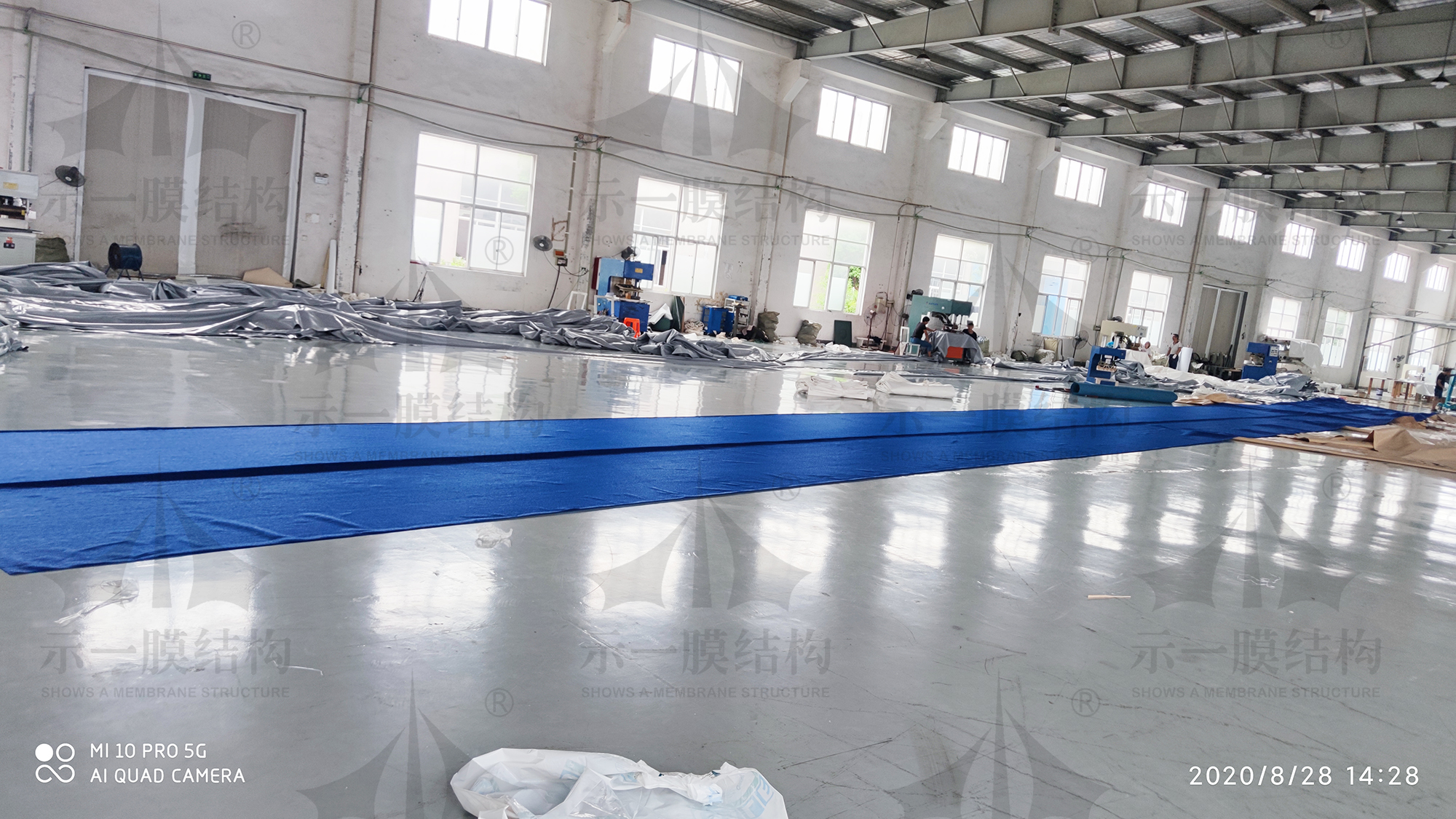The design of our common cable-membrane building is to integrate the building function, the coordination of the internal and external environment, the analysis of the form-finding and structural force transmission system, the selection and tailoring of materials, and the use of computer graphics and multimedia technology. Coordinate planning and scheme design, and then use the software of structure form finding, system internal force analysis and tailoring to complete the cutting of cables and membranes and the processing drawings of parts.

Next, professionals from Shanghai Shows A Membrane Structure Company will give you a detailed description of the process of membrane structure design.
1. Form-finding design is the key and difficult point of cable-membrane structure design. The so-called form-finding is to find the most reasonable spatial shape according to the characteristics of the membrane material and the requirements of the architect. At present, the more popular form-finding methods include force density method, dynamic relaxation method and nonlinear finite element method;
2. Force analysis The force analysis of the membrane structure is generally to use the finite element method to calculate the structure's response under the action of external loads such as snow load and dead weight. Geometric nonlinearity should be considered in the calculation, and the physical nonlinearity of the material can be ignored, and the Newton-Raphson method is used to solve it. In the process of static analysis, if compressive stress occurs in the element, the solution is generally to ignore the role of the element in structural analysis, but the stiffness matrix must be guaranteed to be non-singular in order for the solution to proceed smoothly;
3. Compared with the traditional structure, the membrane structure has a small dead weight, a large flexibility, and a low natural frequency. Therefore, its static and seismic effects do not play a leading role, and the structure is easy to generate wind under the action of wind load. Vibration, tearing and destroying the membrane. Therefore, the dynamic characteristics of the membrane structure under wind load is one of the difficulties and hot spots in the current theoretical and experimental research.
The original text is compiled from Shanghai Shows A Membrane Structure Co., Ltd.
Please specify


